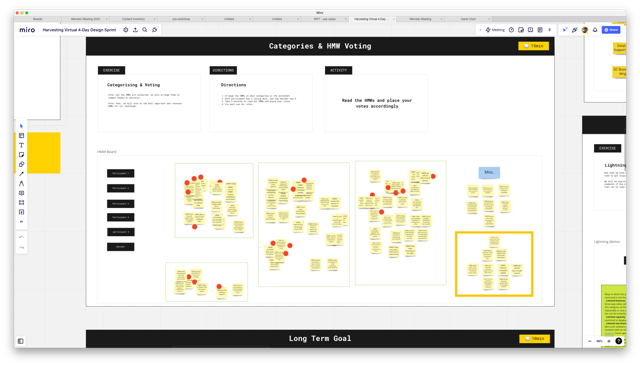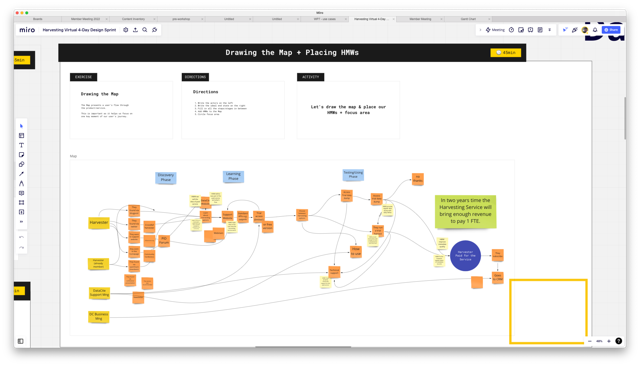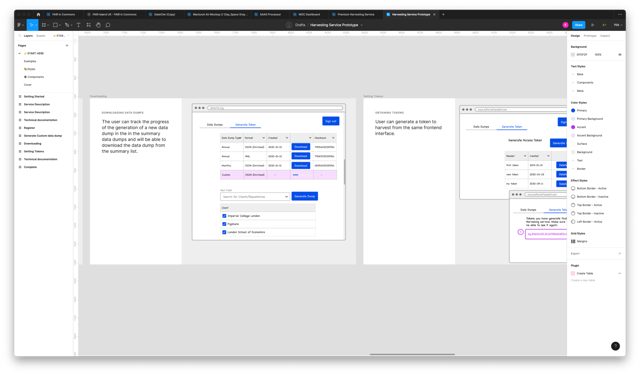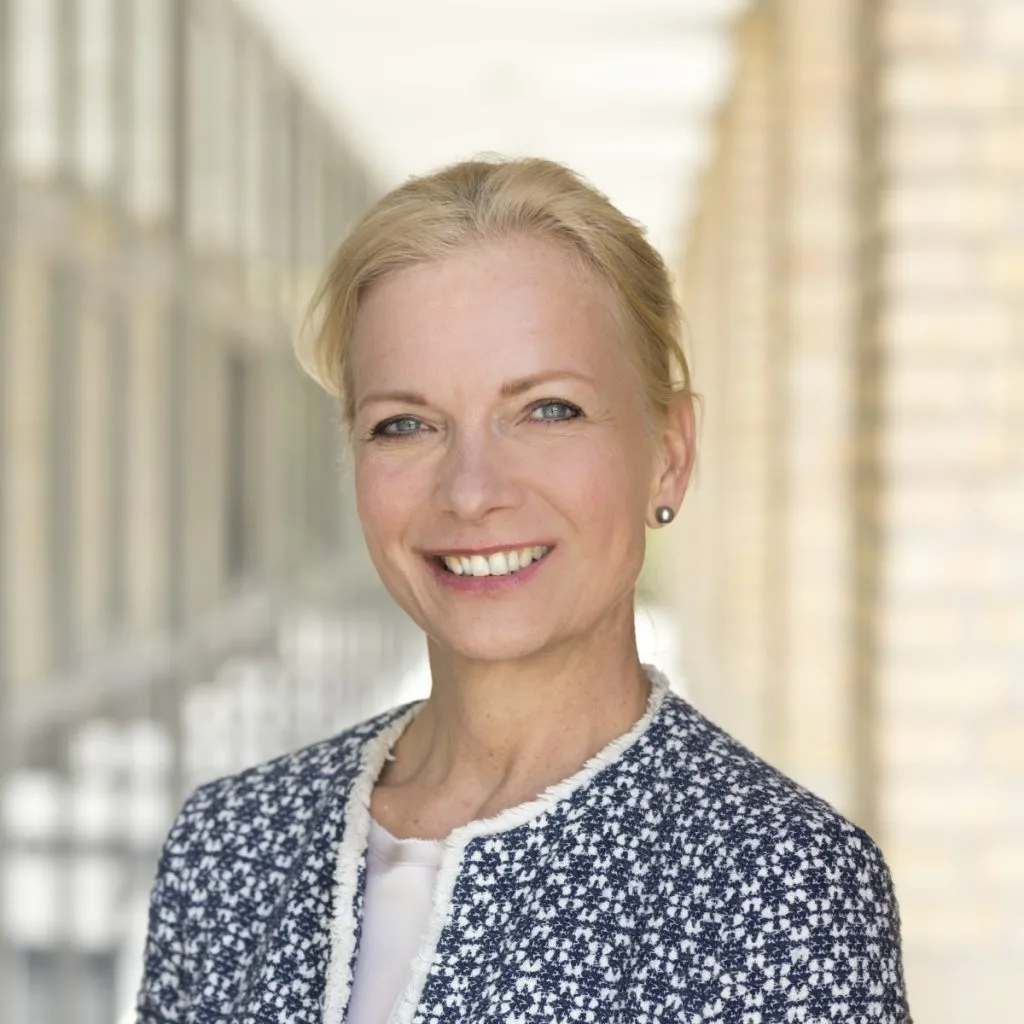Preparation
The project initiated with the formation of a focus group consisting of potential users of the harvesting services. The objective was to explore their perspectives and preferences, which served as crucial input for the design process. As part of this preparatory phase, a design sprint was planned, tailored to address the complexity of re-framing the service. The order of the activities was intentionally altered to foster a long-term vision, with the mapping activity conducted afterwards. This remote design sprint was also a response to the logistical restrictions imposed by the pandemic.





